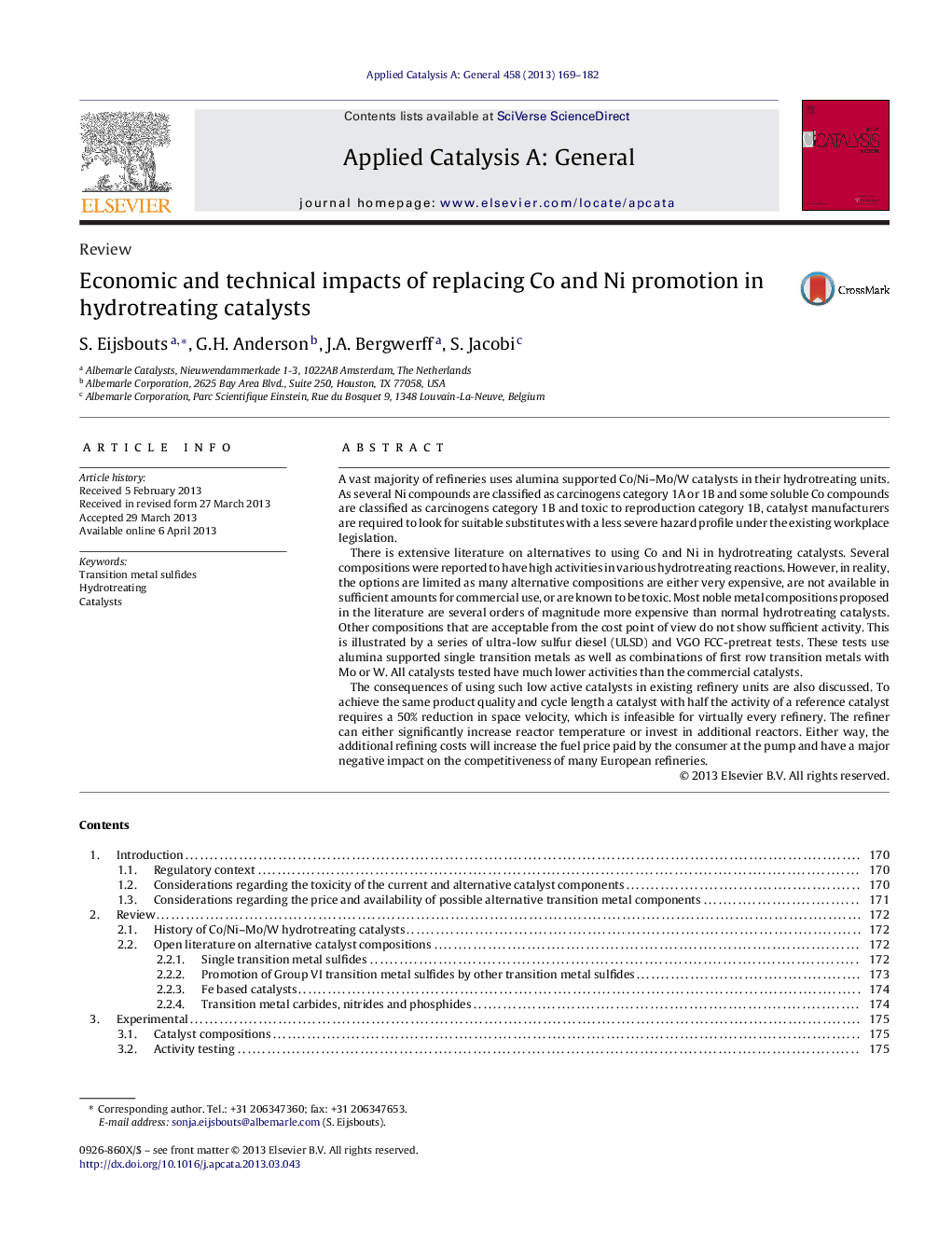| Article ID | Journal | Published Year | Pages | File Type |
|---|---|---|---|---|
| 40454 | Applied Catalysis A: General | 2013 | 14 Pages |
•Co/Ni-free catalysts are too expensive, toxic or have low activity with real feeds.•Low active catalysts must run at LHSV ≤ 0.3 or T ≥ 390 °C to produce 10 ppm S diesel.•Refining costs would escalate if refineries were forced to use low active catalysts.•This would mean competitive disadvantage and risk of shut-downs for EU refineries.
A vast majority of refineries uses alumina supported Co/Ni–Mo/W catalysts in their hydrotreating units. As several Ni compounds are classified as carcinogens category 1A or 1B and some soluble Co compounds are classified as carcinogens category 1B and toxic to reproduction category 1B, catalyst manufacturers are required to look for suitable substitutes with a less severe hazard profile under the existing workplace legislation.There is extensive literature on alternatives to using Co and Ni in hydrotreating catalysts. Several compositions were reported to have high activities in various hydrotreating reactions. However, in reality, the options are limited as many alternative compositions are either very expensive, are not available in sufficient amounts for commercial use, or are known to be toxic. Most noble metal compositions proposed in the literature are several orders of magnitude more expensive than normal hydrotreating catalysts. Other compositions that are acceptable from the cost point of view do not show sufficient activity. This is illustrated by a series of ultra-low sulfur diesel (ULSD) and VGO FCC-pretreat tests. These tests use alumina supported single transition metals as well as combinations of first row transition metals with Mo or W. All catalysts tested have much lower activities than the commercial catalysts.The consequences of using such low active catalysts in existing refinery units are also discussed. To achieve the same product quality and cycle length a catalyst with half the activity of a reference catalyst requires a 50% reduction in space velocity, which is infeasible for virtually every refinery. The refiner can either significantly increase reactor temperature or invest in additional reactors. Either way, the additional refining costs will increase the fuel price paid by the consumer at the pump and have a major negative impact on the competitiveness of many European refineries.
Graphical abstractFigure optionsDownload full-size imageDownload high-quality image (136 K)Download as PowerPoint slide
